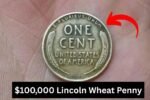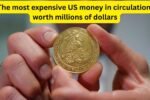The Hunt for a Penny Treasure
Imagine finding a penny in your change that’s worth $90 million! The Lincoln Wheat Penny, first minted in 1909, is a common sight in pocket change, but some rare versions could make you rich. While no Wheat Penny has ever sold for $90 million, certain error coins or high-grade examples have fetched millions, sparking dreams of a life-changing find. Collectors and everyday folks alike are fascinated by the idea that a simple penny could hide such massive value.
Why Some Pennies Are Worth Big Money
Lincoln Wheat Pennies, made from 1909 to 1958, are usually worth just a cent, but rare ones stand out. Errors like the 1969-S Doubled Die or the 1943 Bronze Penny can sell for over $1 million in top condition. The $90 million figure seems like a stretch—more like a collector’s fantasy—but coins in pristine “mint state” (MS65 or higher) or with unique minting mistakes drive huge prices. For example, a 1943 Bronze Penny, accidentally made during World War II when pennies were supposed to be steel, sold for $1.7 million in 2010. Rarity and condition are what turn a penny into a treasure.
Key Features of Valuable Wheat Pennies
Certain details make a Lincoln Wheat Penny valuable. Here’s what to look for:
| Feature | Description |
|---|---|
| Obverse Design | Abraham Lincoln’s portrait, with “IN GOD WE TRUST” above. |
| Reverse Design | Two wheat stalks framing “ONE CENT” (1909-1958). |
| Material | Mostly copper (1909-1942, 1944-1958); some 1943 pennies are bronze, not steel. |
| Key Errors | 1969-S Doubled Die, 1943 Bronze, 1955 Doubled Die—worth up to $1M+. |
| Value (Top Grade) | $1M-$2M for rare errors in high grade; $90M is speculative, not proven. |
These traits make certain pennies collector’s gold, but a $90 million coin would need to be a one-of-a-kind find.
Could One Still Be in Circulation?
The odds of finding a million-dollar Lincoln Wheat Penny in circulation are slim but not impossible. Most high-value pennies, like the 1943 Bronze or 1969-S Doubled Die, were quickly snapped up by collectors. Still, some could be hiding in old jars, family collections, or even loose change. During the 1940s and 1950s, these pennies were used every day, and a few might have slipped through the cracks. Check for errors like doubled lettering (visible with a magnifying glass) or a 1943 penny that’s copper, not steel—it could be worth a fortune.
How to Spot a Valuable Penny
To find a million-dollar penny, focus on condition and errors. Look for coins with sharp details, no scratches, and a shiny surface. Use a magnifying glass to check for doubled text, especially on the date or words like “LIBERTY.” A 1943 penny that sticks to a magnet is likely steel and common, but a non-magnetic bronze one is a jackpot. If you think you’ve found a rare penny, don’t clean it cleaning ruins its value. Take it to a professional grader like PCGS or NGC for appraisal. Estate sales, old coin rolls, or grandma’s piggy bank are good places to start hunting.
The Dream of a $90 Million Penny
While $90 million is likely an exaggeration, the Lincoln Wheat Penny’s allure keeps collectors searching. A 1969-S Doubled Die sold for $1.5 million in 2021, and a 1943 Bronze Penny could hit $2 million in top shape. The idea of a $90 million penny comes from hype around ultra-rare coins, but no penny has come close to that price. Still, the thrill of finding a valuable one keeps the hobby alive. Whether you’re checking your change or digging through old collections, the Lincoln Wheat Penny proves that even a small coin can carry a big dream.




